Explore the Untamed Wilderness of Katavi National Park in Tanzania

Imagine a place where the untamed beauty of Africa remains untouched, where vast herds of buffalo and elephants roam freely, and where the call of the wild resonates throughout the landscape.
That, dearest gentle reader, is the Katavi National Park for you.
In this article, we will guide you through this exclusive and remote gem, exploring its diverse wildlife, stunning scenery, and unique safari experiences. We’ll also highlight the best times to visit Katavi, the unique activities you can enjoy, and essential travel tips to make the most of your adventure.
But first…
Who is AJ Kenya Safaris?
AJ Kenya Safaris is a premier provider of luxury safari experiences across Kenya, offering personalized itineraries that showcase the country’s stunning landscapes, rich wildlife, and diverse cultures. With a commitment to creating unforgettable journeys, AJ Kenya Safaris specializes in high-end, tailor-made adventures that allow travelers to experience the best of Kenya, from the iconic Masai Mara to the pristine beaches of the Kenyan coast. While our expertise lies in Kenya, we also collaborate with trusted partners to help our clients explore other East African destinations, ensuring a seamless and exceptional travel experience.
Here’s a List of Some of our Most Booked Kenya Safari Packages

Experience True Safari Luxury with this 3-Day Masai Mara Classic Safari
From £645
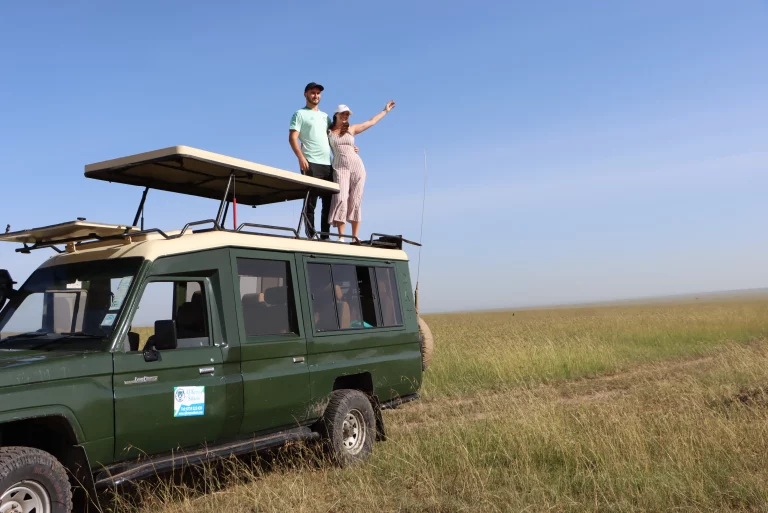
Unforgettable, 4-Day Trip to Masai Mara - Big 5 and More
From £889

Our Best Selling, 5-Day Masai Mara Safari
From £1084

4 Days Big 5 Safari in Lake Nakuru and Masai Mara
From £1042
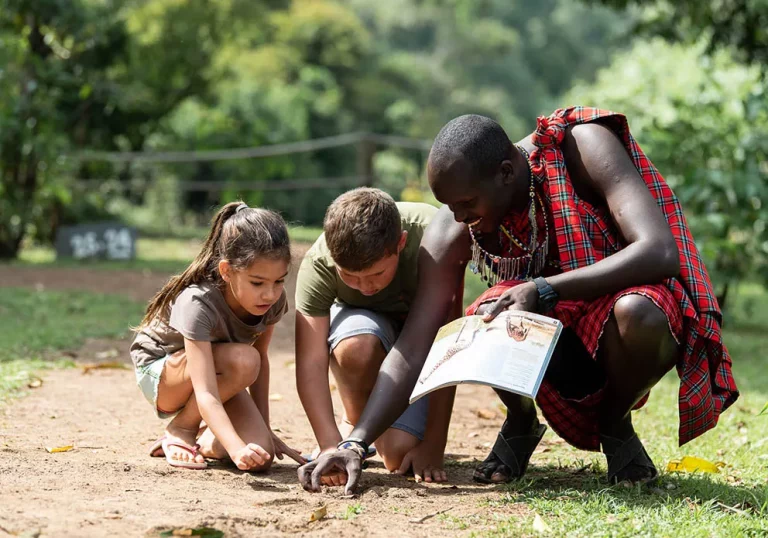
7-Days Safari to Kenya’s Most Breathtaking Destinations
From £1846
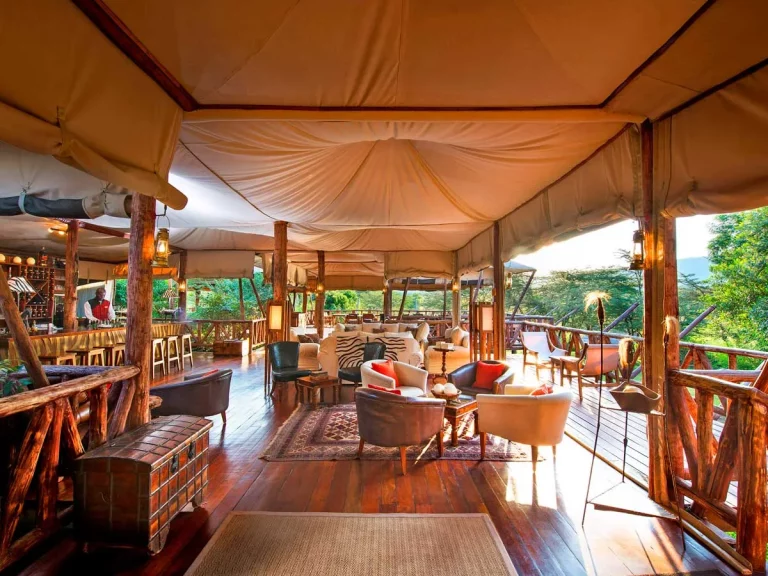
7-Day Honeymoon Safari: This is All the Magic You Need
From £1678

8-Day Safari in Kenya - A Holiday with Purpose
From £2053

9-Day Helicopter Safari: An Exclusive Look into Kenya’s Finest
From £15365

12-Day Kenya Safari and Beach Holiday - A Dream Vacation
From £3141

14-Day, Wildlife and Beach Honeymoon Safari
From £4815
Executive Summary
This article;
- Highlights the rich wildlife and scenic Beauty. It sheds a light on Katavi National Park’s diverse animal populations, including large herds of buffalo, hippos, and elephants, as well as its breathtaking landscapes like the Katisunga Plain and Lake Katavi.
- Explores various safari experiences, including game drives, walking safaris, and fly camping, each offering a distinct way to immerse yourself in the park’s untamed wilderness.
- Provides insights into the best times to visit, detailing the benefits of the dry season for wildlife sightings and the wet season for lush landscapes and birdwatching.
- Outlines the limited accommodation options due to the park’s remote location and offers guidance on transportation and combining Katavi with other Tanzanian destinations for a richer safari experience.
Discovering Katavi National Park

Located in the far west of Tanzania, Katavi National Park is a sanctuary for those who crave an authentic connection with nature. At 4,471 square kilometers, Katavi is the third-largest national park in Tanzania, yet one of the least explored, offering a truly wild and untouched safari experience.
Its primary attraction lies in its rich wildlife diversity and breathtaking landscape which is defined by the Katisunga Plain, a vast grassy plain that is perfect for game viewing. The park is also home to Lake Katavi, a shimmering body of water that adds a tranquil touch to the rugged wilderness, and the Katuma River which provides a vital water source for the animals during the dry season. With its remote location and very few visitors, a Katavi safari promises an exclusive and unforgettable experience.
Wildlife Highlights

As a haven for wildlife, Katavi National Park houses some of Africa’s largest herds of buffalo, with an estimated count of 44,110 individuals. The park is also home to huge numbers of hippos, elephants, and impalas, as well as zebras and various antelope species. Carnivorous animals such as lions, leopards, and hyenas are frequently sighted, making for thrilling game viewing experiences.
Furthermore, Katavi region serves as a birdwatcher’s paradise, boasting a record of over 400 bird species, including the rare Egyptian Goose, Spur-winged Goose, and Comb Duck. In addition, Katavi is one of the few places in Tanzania where the endangered wild dogs can still be found. With such an array of wildlife and their spectacular game moves, Katavi National Park offers a truly memorable African safari experience.
Landscape and Scenery

The varied scenery of Katavi provides a captivating background for sighting wildlife, featuring floodplains, woodlands, and swamps. The floodplains are characterized by extensive grasslands, with sporadic trees and shrubs, providing the perfect habitat for large herds of elephants, buffalo, and antelope, as well as predators such as lions and crocodiles. During the dry season, crocodiles gather around the shrinking waterholes and along the banks of the Katuma River, making for dramatic and memorable encounters.
The woodlands and swamps of Katavi National Park offer a different yet equally beautiful setting for wildlife encounters. Trees such as Acacia, Combretum, Commifora, and Grewia can be found in the woodlands, while the swamps are home to seasonal lakes and migrations of waterfowl during the rainy season. The picturesque scenery of the park, combined with its rich wildlife, makes it a truly captivating destination.
The Safari Experience in Katavi
Embarking on a safari in Katavi National Park promises an experience you’ll never forget, offering a range of activities to suit every traveler’s interests and preferences. The main activities in the park are game drives, walking safaris, and fly camping, which provide an immersive and remarkable experience in this pristine wilderness.
Game Drives
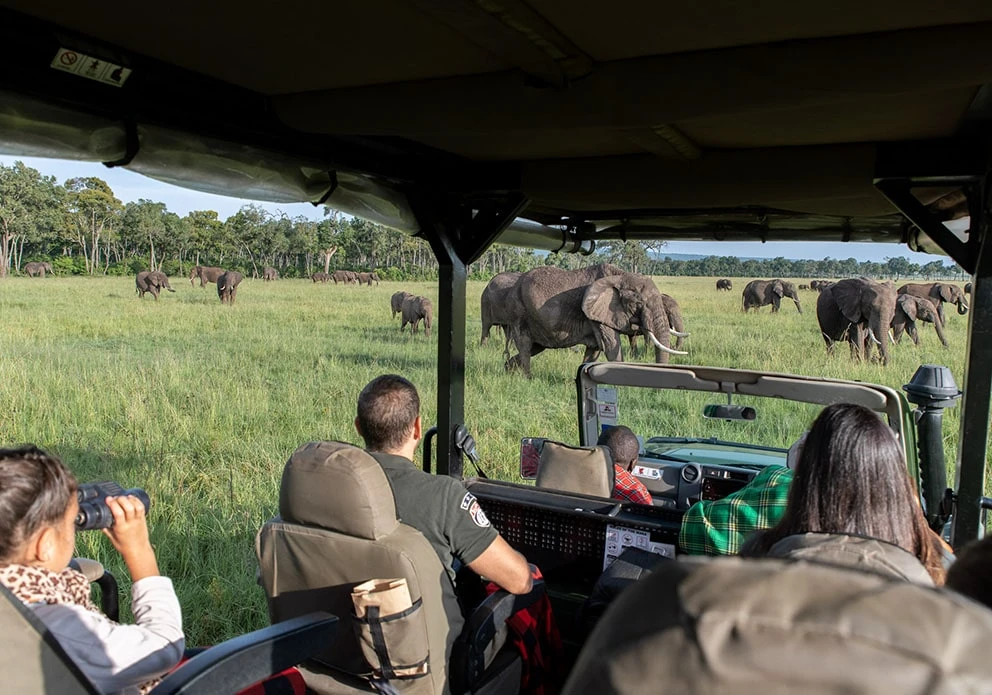
Game drives, being the primary activity in Katavi National Park, present exceptional chances for viewing wildlife. Exploring the park in pop-up safari vehicles allows you to cover more ground and get closer to the animals in their natural habitat. From the comfort of your open-sided safari vehicle, you can observe a wide variety of wildlife, including elephants, lions, leopards, buffalo, giraffes, zebras, hippos, crocodiles, and various species of antelope.
Game drives are typically conducted during the early morning and late afternoon when the wildlife is most active. The park’s experienced guides will help you track and spot the animals, sharing their knowledge about the park’s ecosystem and wildlife behavior. Enjoy a special treat with a bush breakfast—a delightful meal served in the heart of the wilderness, adding a memorable touch to your safari adventure.
Walking Safaris

Wildlife enthusiasts can expect a distinctive and immersive experience from the walking safaris in Katavi National Park. Unlike traditional game drives, walking safaris allow you to:
- Explore the park on foot
- Enjoy a closer and more personal encounter with the natural surroundings and wildlife
- Have an intimate experience that allows for a deeper connection with nature
- Observe the smaller details that may be overlooked from a vehicle
To ensure your safety during our guided walking safaris, you will be accompanied by at least two guides, one of whom will be armed. The guides have undergone extensive wilderness and safety training to handle any potential threats. It is essential to follow the instructions of the guides and avoid wearing bright or white clothing to blend in with the surroundings.
Fly Camping

For those seeking an even more adventurous and authentic safari experience in Katavi National Park, fly camping offers the perfect opportunity to immerse yourself in the untouched beauty of the park, away from the main campsites. Sleeping in a lightweight tent under the stars, surrounded by the sounds of the African bush, is an experience like no other.
Fly camping provides:
- A closer connection to nature through bush camping
- The opportunity to hear the sounds of the wilderness at night
- The chance to spot wildlife up close
- A sense of exclusivity and privacy, as you are often the only ones in the area.
This, however, is not for everyone, as it requires a more adventurous spirit and a willingness to embrace the rustic and simple nature of the experience. But for those seeking a truly unforgettable and unique safari experience, fly camping in Katavi National Park is an adventure worth considering.
Planning Your Visit to Katavi National Park
When planning your visit to Katavi National Park, it’s crucial to take into account the optimal time for your visit, available transportation options, and suitable accommodation choices to fully enjoy your adventure. While this remote and wild park offers an exclusive and unique experience, it also requires careful planning to ensure a smooth and memorable trip.
In this segment, we’ll share useful information and advice that will assist you in preparing for an ideal safari in Katavi, from deciding when to go and how to get there, to choosing the right accommodation for your needs and preferences.
Best Time to Visit
The best time to visit Katavi National Park depends on your interests and preferences. While wildlife viewing is excellent year-round, the dry season from June to November is when the park truly shines as a classic dry season park. During this period, large numbers of game congregate around the river, making it the prime time for spotting wildlife. However, please note that the dry season is also peak season, which means higher prices for accommodation and safari experiences.
On the other hand, the wet season from November to March offers a different experience, with lush green landscapes and an abundance of migratory birds. No matter when you choose to visit, Katavi National Park promises a truly unforgettable and unique safari experience.
Transportation Options
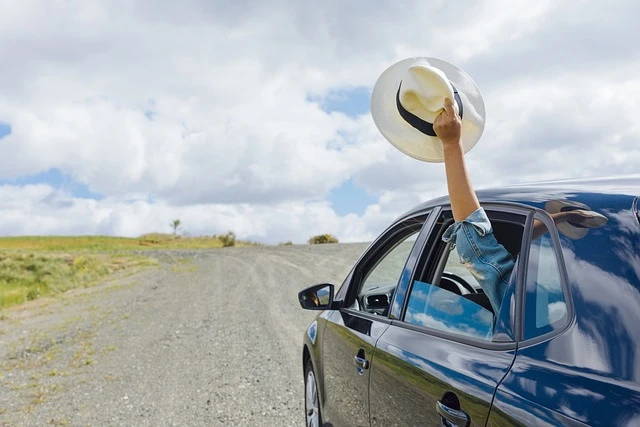
Reaching Katavi National Park can be a bit of an adventure in itself, as the park’s remote location requires careful planning. The quickest and most efficient way to get to Katavi is a charter flight from Arusha or Dar es Salaam. This will take approximately 4-5 hours. Safari Air Link offers bi-weekly flights from these cities, connecting Katavi with other popular Tanzanian destinations.
For those seeking a more adventurous journey, it is also possible to reach Katavi by car, although the drive from Dar es Salaam takes 2-3 days, while the road journey from Arusha takes 22 hours. Whichever option you choose, the journey to Katavi National Park is sure to be a memorable part of your Tanzanian safari experience.
Accommodation Choices

Due to its remote location, accommodation options in Katavi National Park are limited, with very few camps available. Some of the available lodges and camps in the park include Katavi Wildlife Camp and Chada Camp by Nomad Tanzania.
These accommodations offer different levels of comfort and amenities, so it’s important to choose the one that best suits your needs and preferences. When planning your stay in Katavi, make sure to consult websites such as TripAdvisor or Easy Travel for precise pricing information and reviews from fellow travelers.
Combining Katavi with Other Tanzanian Destinations
While Katavi National Park offers an exclusive and unforgettable safari experience, Tanzania is a country rich in diverse landscapes, wildlife, and cultural attractions. To make the most of your Tanzanian adventure, consider combining your visit to Katavi with other popular destinations in the country.
In this section, we will explore two popular itineraries that combine Katavi with other Tanzanian destinations, allowing you to experience the best of Tanzania’s wildlife, landscapes, and culture.
Tanzania’s Northern Circuit

One popular option for combining Katavi with other Tanzanian destinations is to explore the famous Northern Circuit, which includes:
- Tarangire National Park
- Lake Manyara National Park
- Ngorongoro Crater
- The world-famous Serengeti National Park
These parks offer a diverse range of landscapes and wildlife experiences, from the massive herds of wildebeest and zebras in the Serengeti to the unique tree-climbing lions of Lake Manyara.
By combining your visit to Katavi with Tanzania’s Northern Circuit, you can experience the best of the country’s wildlife and scenery in one unforgettable trip.
Southern Tanzania and Zanzibar

Another great option for combining your Katavi safari with other Tanzanian destinations is to explore Southern Tanzania’s safari parks and the idyllic beaches of Zanzibar. Southern Tanzania is home to some of the country’s best-kept secrets, such as the Selous Game Reserve, Ruaha National Park, and Mikumi National Park.
These parks offer a more off-the-beaten-path safari experience compared to the parks in the Northern Circuit, with fewer tourists and a greater sense of wilderness and exclusivity. After your safari adventure in Southern Tanzania, unwind on the pristine beaches of Zanzibar, a beautiful island paradise rich in history and culture.
Responsible Tourism in Katavi National Park
As you set off on your journey to Katavi National Park, keep in mind the potential impact of tourism on the environment and local communities. Practicing responsible tourism during your visit not only helps to preserve the park’s unique ecosystems and wildlife but also supports the livelihoods of the communities that call this region home.
By choosing eco-friendly accommodations, participating in conservation programs, and respecting the park’s rules and guidelines, you can help ensure that Katavi National Park remains a pristine and unspoiled destination for future generations to enjoy.
Summary
In conclusion, Katavi National Park offers an exclusive and unforgettable safari experience, with its remote location, diverse wildlife, stunning landscapes, and unique activities such as game drives, walking safaris, and fly camping. By carefully planning your visit, combining Katavi with other Tanzanian destinations, and practicing responsible tourism, you can make the most of your adventure in this incredible African wilderness. So why wait? Start planning your dream safari to Katavi National Park today!
Frequently Asked Questions
In this section, we address common queries about Katavi National Park to help you plan your visit.
What is Katavi famous for?
Katavi is renowned for its large herds of buffaloes and elephants, as well as various predators such as lions, painted wolves, cheetahs, and hyenas. It is also home to the impressive roan and sable antelopes.
What are the regions near Katavi?
Katavi is bordered to the east by Tabora Region, south by Rukwa Region, and west by DRC. It shares attractions with its neighbouring regions of Kigoma and Rukwa which are home to various tourism attractions.
Which tribe is found in katavi?
The Katavi National Park, located in Tanzania, East Africa, was established in 1974 and covers an area of 4,471 square kilometers. It is home to the Wajiji Tribe, who once inhabited the area.
What is unique about Katavi National Park?
Katavi National Park offers a unique combination of habitats, from flood plains with dense waterways to woodlands, open grasslands, and forests. It is home to a vast array of wildlife, including hippos and crocodiles.
What is the best time to visit Katavi National Park?
Visiting Katavi National Park during the dry season (June to November) is the best time for spotting wildlife, while the wet season (November to March) is ideal for birdwatching.




